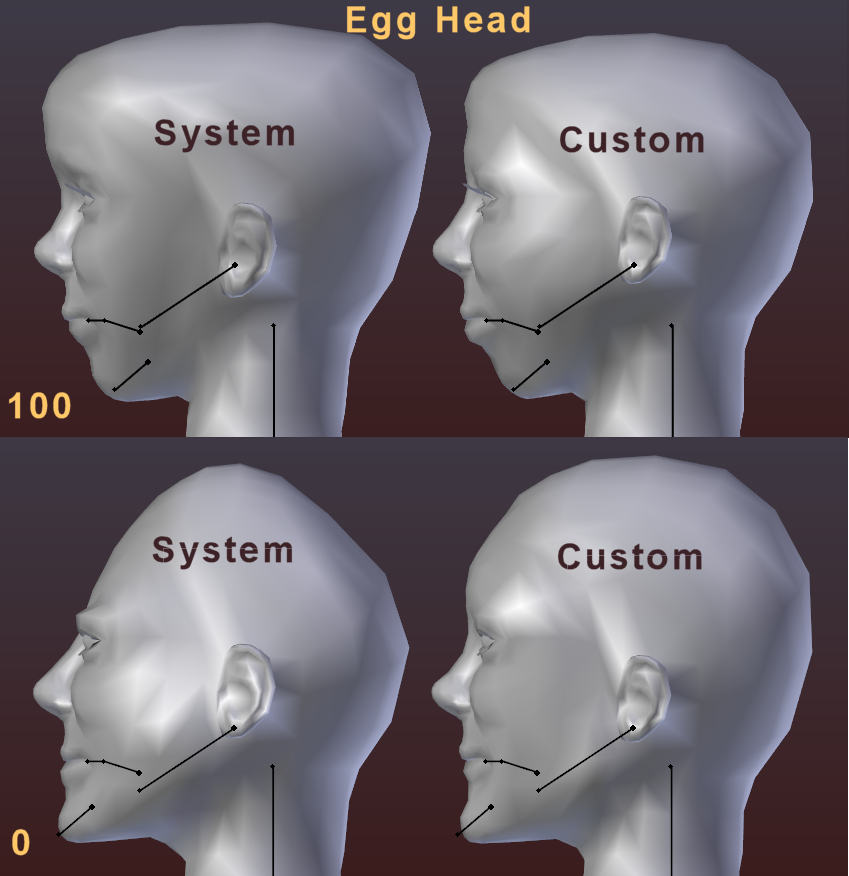


This blog is my notes – an outline of the workflow.
AVASTAR BENTO 2.8 UPGRADE FOR FREE
The blend files and dae exports are available for free at the GitHub repo. Roth has had only one release candidate so far in Blender 2.79, so I started working on him again last year, converting to what is now Blender 2.82.7 or whatever the most recent stable release. The current active forum is at Discord, more comments are at the GitHub repo. To do this work I used armatures from the viewer xml files found at Linden Lab viewer releases which I replicated in Blender to use for vertex weighting, and the Avastar plugin for dae exporting. The UV maps are based on Linden Lab’s default avatar UV map island layout. The mesh and vertex weights are licensed under AGPL, which means that you can do whatever you like with them, but if you distribute them you must include a link back to the source GitHub repository, and if you make modifications and distribute them, you must donate your modifications back to the GitHub repository. The Ruth and Roth mesh were originally modeled by Shin Ingen using ZBrush. There have been many volunteer collaborators since. It is a teaching project, begun in 2018 by Shin Ingen. RuthAndRoth is an opensimulator community collaboration, to bring free open source mesh bodes to opensimulator grids.
AVASTAR BENTO 2.8 UPGRADE SKIN
On import to the viewer: check skin weights, but not joint edits. If you’re working on a pregnant centaur, you’ll probably have to split up the mesh. We can only import mesh with 110 or fewer vertex groups. From there it’s blurring and tweaking and a lot of patience. Because each of the volume bones is parented to an mBone, we can move mBones to test volume weights. For the torso, I usually weight paint a draft for CLAVICLE, CHEST, UPPER_BACK, PECs, LOWER_BACK, BELLY, BUTT and PELVIS, then test by moving the mBones. If your mesh is already rigged to another armature, you can probably get away with just changing the names of the vertex groups to map to HEAD, NECK, UPPER_ARM, LOWER_ARM, UPPER_LEG, LOWER_LEG and FOOT. If you haven’t skinned a ‘fitted’ mesh, it can be tricky, because there are more volume bones in the torso than there are mBones, so there isn’t a direct swap available. Inworld, in order for the Appearance Sliders to work with the volume bones (muscles, boobs, belly and butt), we must use the inworld armature default joint positions for all the bones. This is just to make it easier to skin your mesh. To use with your mesh: If the avatar or clothing you’re working with is not very close to the default shape, then you may want to put the armature into edit mode, move bones so they fit your mesh, or the avatar you’re using as a template/dev kit. For the volume bones, I lined them up and sized them so that auto-weighting should work better than it did before. I used the volume bones from these files, because they have custom bone settings we need for fitted mesh skinning, and swapped them into a Bento armature, then fit the new armature to as close as I could get to the inworld armature. There are copies stashed at GitHub/RuthAndRoth. None of them match exactly, but the BaseFemale and BaseMale mesh from c.2014 seem to fit the best. I tested some of the Linden Lab downloads to find mesh that matches the inworld default avatar. Each of the plugins available for exporting mesh from Blender to an OS viewer has its problems. People who design for the RuthAndRoth mesh avatar bodies needed a better one. It feels good to be back, and thank you, subscribers, for your support!Īll I have today is a new OSSL armature that should work for most fitted mesh.


 0 kommentar(er)
0 kommentar(er)
